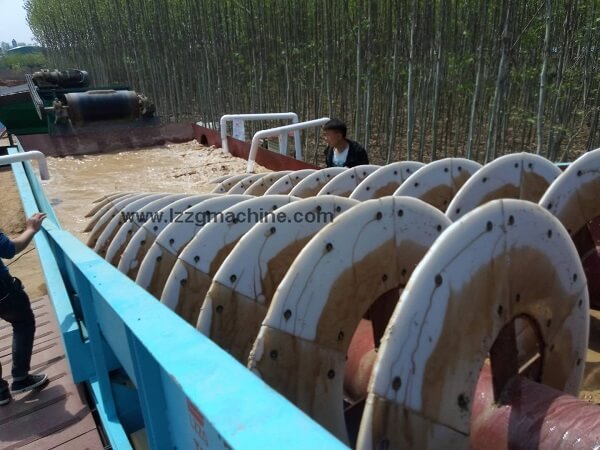
Methods for efficient ore washing
According to the characteristics of different ores, choosing suitable washing equipment can improve the washing efficiency. Hydraulic ore washing screen The ore washing method using a water gun to wash…
published date: 04-17-2019
Spiral classifier is widely used in the grading of the grinding circuit of the concentrator and the operations of washing, de-sludge, and dewatering. Its main advantages are simple equipment construction, reliable operation, and convenient operation. It can be self-flowing with energy-saving ball mill in the closed-circuit grinding circuit. It is suitable for wet magnetic separation of magnetite, pyrrhotite, roasting ore, ilmenite and other materials with particle size below 3mm. It has the advantages of small equipment footprint and compact design. It is also used in coal and non-metallic minerals. Iron removal operations for materials such as building materials. It’s also named screw classifier.

spiral classifier in sand washing plant
Compared with the hydro cyclone, the power consumption is lower. The main disadvantages are low classification efficiency, heavy equipment, and large floor space. Due to the limitation of equipment specifications and production capacity, it is generally not possible to form a closed circuit with a ball mill with a specification of Φ3.6m or more.
Application range Mainly used in the classification of various non-ferrous metal ore dressings such as quartz sand, gold, iron, aluminum, etc. It can also be used for the classification of materials such as pulp and ore.
Processing capacity
The model of the screw classifier is different, the processing capacity is different, and the processing capacity of the spiral classifier is 30~240 m³/h.
The classifier was divided into two types: sorghum type and submerged type. The high-grade classifier is suitable for coarse materal classification. The maximum particle size of the overflow is generally 0.4~0.15mm. The sinking classifier is suitable for fine-materal classification. The maximum particle size of the overflow is generally below 0.15mm.
It is mainly composed of a grading tank, a spiral, a swaying device, a lifting device, and upper and lower support.

| Model | Capacity(m³/h) | Water consu-mption (m³/h) | Spiral diameter (mm) | Tank length (mm) | Feed size (mm) | Motor Power (kw) | Weight (kg) | Dimension (mm) |
| LXS920 | 30-100 | 10-80 | 920 | 8016 | ≤10 | 11 | 4270 | 8715*1632*2075 |
| 2LXS920 | 60-200 | 20-160 | 920 | 8016 | ≤10 | 11*2 | 7580 | 8715*2602*2075 |
| LXS1120 | 40-120 | 20-150 | 1120 | 8532 | ≤10 | 18.5 | 5560 | 9231*1833*2126 |
| 2LXS1120 | 80-240 | 40-300 | 1120 | 8532 | ≤10 | 18.5*2 | 10000 | 9231*2995*2126 |
Machine size, capacity can be customized according to customer requirements

According to the characteristics of different ores, choosing suitable washing equipment can improve the washing efficiency. Hydraulic ore washing screen The ore washing method using a water gun to wash…

[caption id="attachment_7388" align="alignnone" width="677"] spiral classifier[/caption] Centrifugal beneficiation mainly relies on centrifugal force to speed up the sedimentation and layering speed of fine particle size. It is suitable for processing…

Iron ore washing instruction Ore washing is the gravity dressing process used to treat ore that is cemented with clay or contains much mud. Mainly the process of separating materials…

Applycation of sand classifer Beneficiation The spiral classifier is one of the equipment for beneficiation. The spiral classifier is a machine for mechanical classification based on the principle that the…